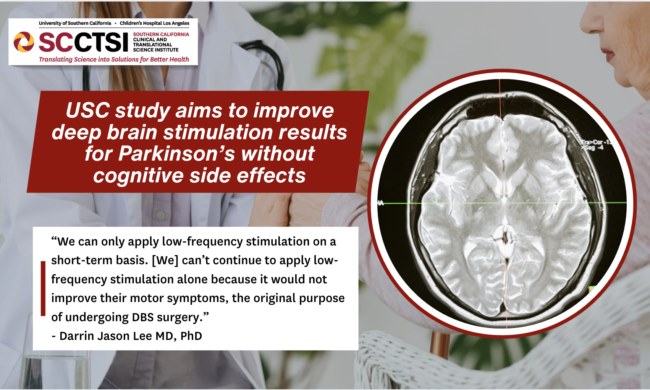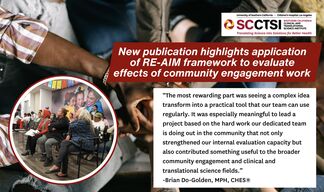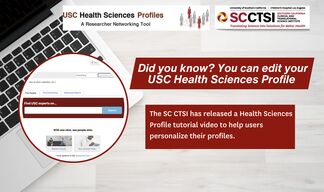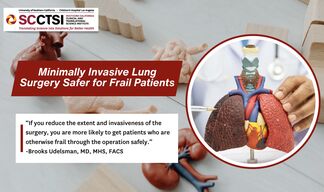USC study aims to improve deep brain stimulation results for Parkinson’s without cognitive side effects
Former K08 Scholar Darrin Lee’s collaboration with SC CTSI brings research to fruition
Parkinson’s disease is a progressive condition that affects the brain and worsens over time, causing movement symptoms such as rigidity and tremor. The disease also can cause cognitive deficits in memory and thinking. Deep Brain Stimulation (DBS) has proven to be an effective treatment to alleviate some motor symptoms of Parkinson’s disease. However, DBS can worsen the disease’s negative impact on executive function, working memory and verbal fluency.
Researchers at the University of Southern California (USC) are studying a new way to deliver DBS that could sustain the treatment’s motor benefits as well as improve cognitive dysfunction. If study results show benefits from the experimental treatment protocol, it could help people with other cognitive-related diagnoses as well.
The scientists will compare two different DBS protocols in the same brain area and study how this treatment could improve overall results.

Standard DBS—the most frequently performed surgical treatment for Parkinson’s—involves making small holes in the skull and implanting electrodes into deep brain structures. High-frequency electrical fast pulses are sent to a small structure in the brain improving movement.
Nonstandard DBS paradigms, using low-frequency (“theta” or slow pulse) treatment, has shown some cognitive benefits in Parkinson’s patients, but research into this protocol is limited.
“We can only apply low-frequency stimulation on a short-term basis,” said Darrin Jason Lee MD, PhD, associate professor of neurological surgery at the Keck School of Medicine of USC. Lee conducted these previous experiments at the University of Toronto and subsequently at USC.
“You can’t continue to apply low-frequency stimulation alone because it would not improve their motor symptoms, the original purpose of undergoing DBS surgery,” Lee said.
Lee is the primary investigator of a five-year grant awarded by the National Institutes of Health to fund a randomized double-blind phase 2 clinical trial. Forty patients undergoing DBS treatment will participate in a novel stimulation paradigm named “theta burst stimulation,” which sends high-frequency bursts of signals interwoven with slower theta waves.
In this integration of fast pulse and slow pulse treatment, electrical signals stimulate the subthalamic nucleus, an oval-shaped structure in the brain that plays a key role in controlling movement, cognition and emotion. The study will compare the results of standard DBS stimulation paradigms with the novel interwoven stimulation.
Another member of the research team is Melissa Lee Wilson, PhD, MPH, a biostatistician within the Biostatistics, Epidemiology, and Research Design (BERD) core in the Southern California Clinical and Translational Science Institute (SC CTSI) and a faculty member at USC.
“I’ve worked with Darrin since his days as a K08 scholar, when I was the co-instructor for the Clinical Translational Research course series for the trainees. During this time, we worked on some of his early grant proposals,” Wilson said. “Upon his completion of the program, we continued to work together through my role as a Biostatistician in the BERD core. Darrin has attracted a talented pool of collaborators to complement his strengths, and it’s great to continue our collaborations beyond the classroom.”
Lee finds that their collaboration, especially Wilson’s statistical expertise, is highly beneficial to his research.
“Melissa identified the number of patients needed for the study and helped us with statistical analysis and randomization of patients,” said Lee. “She wrote certain sections of the grant such as the power analysis and guided us in developing our REDCap database.”
REDCap is a tool that allows researchers to build and manage databases and surveys for research studies.
This trial is the first rigorous study that explores how varying the electrical stimulation patterns can impact cognitive functions.
“It is the first trial to systematically examine how applying electricity in different patterns with different rhythms to the same area of the brain can have different effects,” said Xenos Mason, MD, assistant professor of clinical neurological surgery and neurology at the Keck School of Medicine of USC, and a co-investigator in the clinical trial.
“The subthalamic nucleus is high-value real estate territory, and it has reciprocal connections to different parts of the brain,” Mason added. “It is involved in the gating mechanism of the brain that controls the selection of actions and the selection of thoughts. It also probably has a role in controlling speed of thought, controlling propensity to have certain streams of thought, controlling the regulation of emotion, in the same way that it regulates movement.”
If the new interwoven DBS treatment is effective, it might also help those with other memory-related diseases, such as Lewy body dementia (LBD), the second most common cause of dementia after Alzheimer’s disease.



